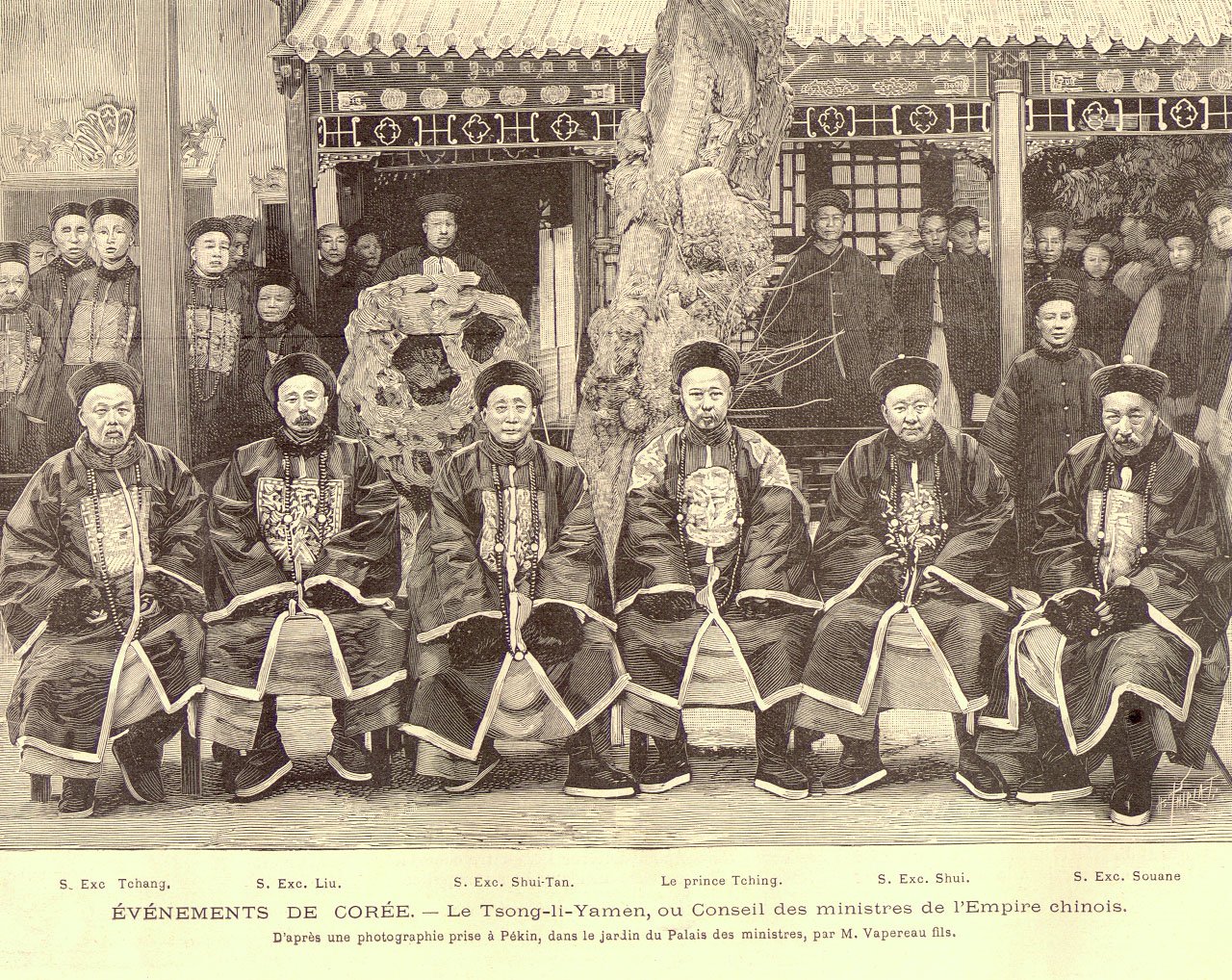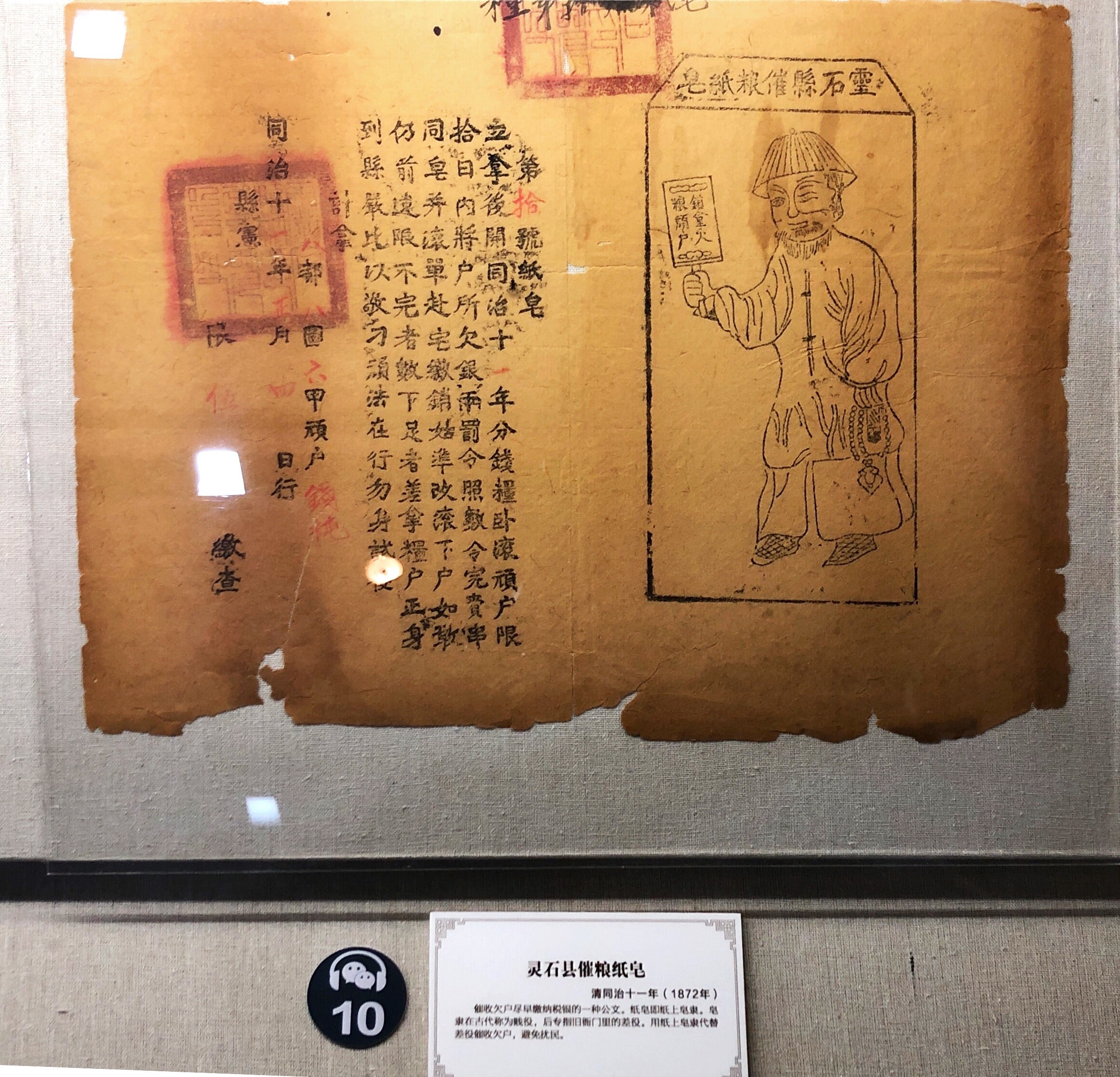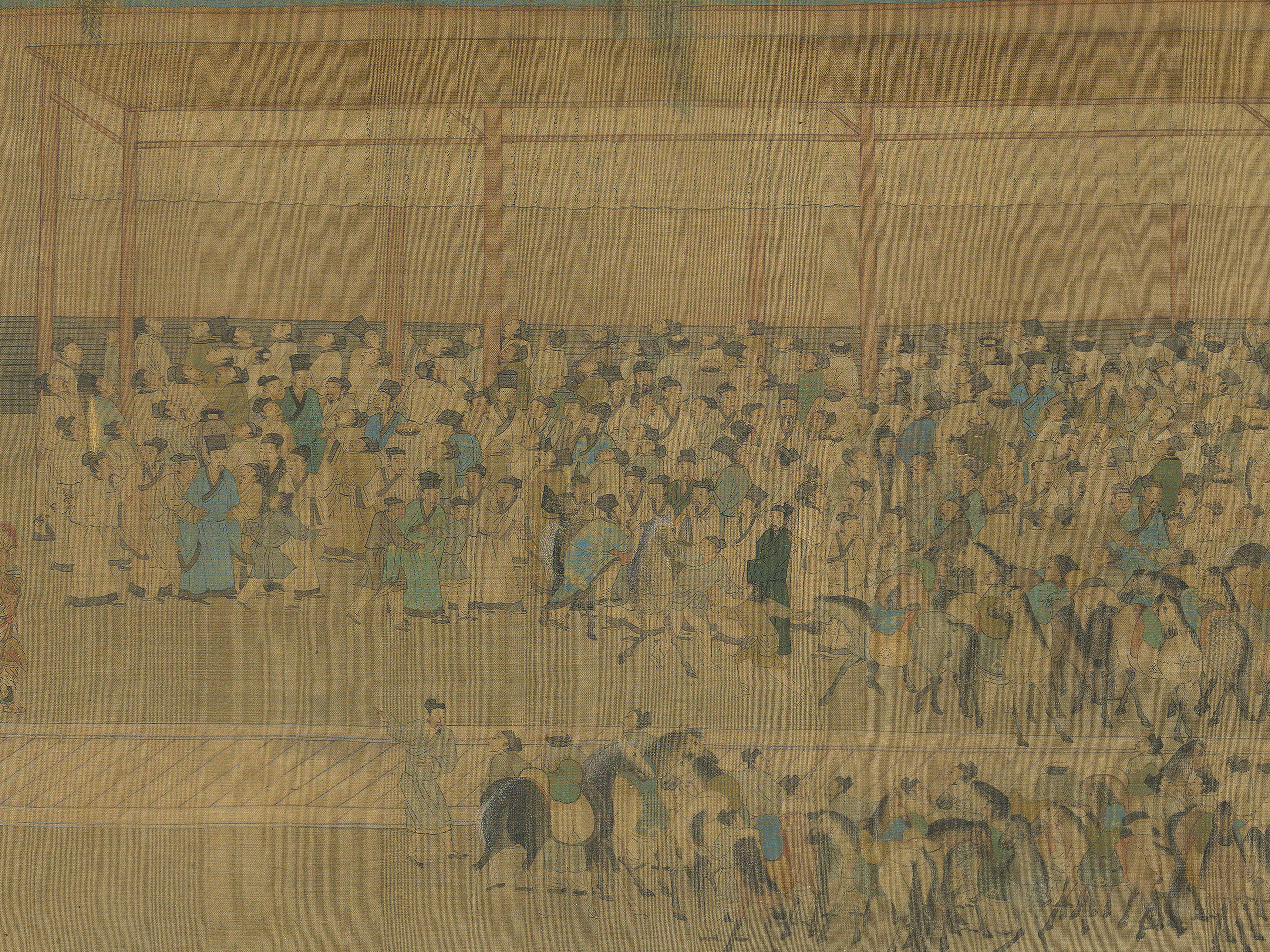|
Yamen
A ''yamen'' (''ya-men''; ; Manchu: ''yamun'') was the administrative office or residence of a local bureaucrat or mandarin in imperial China, Korea, and Vietnam. In some places, such as Kowloon Walled City, Hong Kong, it was named as ''almshouse''. A ''yamen'' can also be any governmental office or body headed by a mandarin, at any level of government: the offices of one of the Six Ministries is a ''yamen'', but so is a prefectural magistracy. The term has been widely used in China for centuries, but appeared in English during the Qing dynasty. Overview Within a local ''yamen'', the bureaucrat administered the government business of the town or region. Typical responsibilities of the bureaucrat includes local finance, capital works, judging of civil and criminal cases, and issuing decrees and policies. Typically, the bureaucrat and his immediate family would live in a residence attached to the ''yamen''. This was especially so during the Qing dynasty, when imperial law ... [...More Info...] [...Related Items...] OR: [Wikipedia] [Google] [Baidu] |
Zongli Yamen
The ''Zongli Yamen'' (), short for Office for the General Management of Affairs Concerning the Various Countries (), also known as Prime Minister's Office, Office of General Management, was the government body in charge of foreign policy in imperial China during the late Qing dynasty. It was established by Prince Gong on 11 March 1861 after the Convention of Beijing. It was abolished by the Qing government in 1901 and replaced with a Foreign Office of ministry rank. The former site of the ''Zongli Yamen'' is now located in Dongtangzi Hutong, Dongcheng District, Beijing. Nearly all the buildings are preserved in good condition. Meaning of name ''Zongli Yamen'' is a traditional abbreviation of the official name (), literally meaning "Office in Charge of Affairs Concerning All Nations".The corresponding name in Manchu, the other official language of the Qing Empire, was ''Geren gurun i baita be uherileme icihiyara yamun.'' () A common misconception is that the Zongli Yamen's n ... [...More Info...] [...Related Items...] OR: [Wikipedia] [Google] [Baidu] |
Yamen Runner (衙役) Ming Dynasty Activities Of Minister Of War Wang Qiong
A ''yamen'' (''ya-men''; ; Manchu: ''yamun'') was the administrative office or residence of a local bureaucrat or mandarin in imperial China, Korea, and Vietnam. In some places, such as Kowloon Walled City, Hong Kong, it was named as ''almshouse''. A ''yamen'' can also be any governmental office or body headed by a mandarin, at any level of government: the offices of one of the Six Ministries is a ''yamen'', but so is a prefectural magistracy. The term has been widely used in China for centuries, but appeared in English during the Qing dynasty. Overview Within a local ''yamen'', the bureaucrat administered the government business of the town or region. Typical responsibilities of the bureaucrat includes local finance, capital works, judging of civil and criminal cases, and issuing decrees and policies. Typically, the bureaucrat and his immediate family would live in a residence attached to the ''yamen''. This was especially so during the Qing dynasty, when imperial law ... [...More Info...] [...Related Items...] OR: [Wikipedia] [Google] [Baidu] |
Kowloon Walled City
Kowloon Walled City () was an extremely densely populated and largely lawless enclave of China within the boundaries of Kowloon City of former British Hong Kong. Built as an imperial Chinese Fortification, military fort, the walled city became a ''de jure'' enclave after the New Territories were leased to the United Kingdom in 1898. Its population increased dramatically after the end of the Japanese occupation of Hong Kong during World War II, attracting mostly refugees fleeing the renewed Chinese Civil War. By the late 1980s, the walled city contained roughly 35,000 residents within its territory of , or approximately four football fields; resulting in a staggering population density of over 3 million people per square mile. As a result of the absence of any widely recognized bureaucracy, the city's residents and businesses had no municipal codes to govern them. Enabled by the enclave's anarchic nature, trade in banned products thrived, ranging from narcotics to Dog meat#Hon ... [...More Info...] [...Related Items...] OR: [Wikipedia] [Google] [Baidu] |
Kowloon Walled City Park
The Kowloon Walled City Park is a park in Kowloon City, Kowloon, Hong Kong. The Kowloon Walled City had been a military stronghold since the 15th century due to its coastal location and was a slum. Under an agreement between the Government of Hong Kong and the People's Republic of China, the Kowloon Walled City was demolished in the 1990s. Some historic buildings and features were preserved for incorporation into the new park. The Kowloon Walled City Park is designed resembling a Jiangnan garden of the early Qing dynasty. The park, 31,000 square metres (7.66 acres) in total, is divided into eight theme zones with their own characteristic scenery, matching with the style of the whole park. The design was awarded a Diploma at the IGO Stuttgart 1993 World Horticultural Exposition, Expo 93 (International Garden Exposition). History In the middle of the 19th century, the Qing government started to build an enclave beside Kowloon Bay, surrounded by stone walls. The Kowloon Wall ... [...More Info...] [...Related Items...] OR: [Wikipedia] [Google] [Baidu] |
Neixiang County
Neixiang County () is a CPRC, county under the jurisdiction of Nanyang, Henan, Nanyang City, in the southwest of Henan province, China. It has an area of and a population of 610,000 as of 2002. Neixiang is best known because it has China's best preserved Yamen, or county government office. The Yamen in Neixiang was originally built in the Yuan Dynasty and has a history of more than 700 years. It was destroyed and rebuilt several times, and the existing architecture mostly dates to the Qing Dynasty when it was built by Zhang Bingtao in 1882; it took three years to build. It has an area of , and there are more than 260 existing rooms. It is currently China's best-preserved feudal county government office. It is home to Neixiang Air Base. Administrative divisions As of 2012, this county is divided to 10 towns and 6 townships. ;Towns ;Townships Climate Transport *China National Highway 312 Cultural Heritage Intangible cultural heritage, Intangible Cultural Heritag ... [...More Info...] [...Related Items...] OR: [Wikipedia] [Google] [Baidu] |
Imperial Era Of Chinese History
The history of China spans several millennia across a wide geographical area. Each region now considered part of the Chinese world has experienced periods of unity, fracture, prosperity, and strife. Chinese civilization first emerged in the Yellow River valley, which along with the Yangtze basin constitutes the geographic core of the Chinese cultural sphere. China maintains a rich diversity of ethnic and linguistic people groups. The traditional lens for viewing Chinese history is the dynastic cycle: imperial dynasties rise and fall, and are ascribed certain achievements. This lens also tends to assume Chinese civilization can be traced as an unbroken thread many thousands of years into the past, making it one of the cradles of civilization. At various times, states representative of a dominant Chinese culture have directly controlled areas stretching as far west as the Tian Shan, the Tarim Basin, and the Himalayas, as far north as the Sayan Mountains, and as far south as t ... [...More Info...] [...Related Items...] OR: [Wikipedia] [Google] [Baidu] |
Three Departments And Six Ministries
The Three Departments and Six Ministries () system was the primary administrative structure in imperial China from the Sui dynasty (581–618) to the Yuan dynasty (1271–1368). It was also used by Balhae (698–926) and Goryeo (918–1392) and various other kingdoms in Manchuria, Korea and Vietnam. The Three Departments were three top-level administrative structures in imperial China. They were the Central Secretariat, responsible for drafting policy, the Chancellery, responsible for reviewing policy and advising the emperor, and the Department of State Affairs, responsible for implementing policy. The former two were loosely joined as the Secretariat-Chancellery during the late Tang dynasty, Song dynasty and in the Korean kingdom of Goryeo. The Six Ministries (also translated as Six Boards) were direct administrative organs of the state under the authority of the Department of State Affairs. They were the Ministries of Personnel, Rites, War, Justice, Works, and Revenue. ... [...More Info...] [...Related Items...] OR: [Wikipedia] [Google] [Baidu] |
Qing Dynasty
The Qing dynasty ( ), officially the Great Qing, was a Manchu-led Dynasties of China, imperial dynasty of China and an early modern empire in East Asia. The last imperial dynasty in Chinese history, the Qing dynasty was preceded by the Ming dynasty and succeeded by the Republic of China (1912–1949), Republic of China. At its height of power, the empire stretched from the Sea of Japan in the east to the Pamir Mountains in the west, and from the Mongolian Plateau in the north to the South China Sea in the south. Originally emerging from the Later Jin (1616–1636), Later Jin dynasty founded in 1616 and proclaimed in Shenyang in 1636, the dynasty seized control of the Ming capital Beijing and North China in 1644, traditionally considered the start of the dynasty's rule. The dynasty lasted until the Xinhai Revolution of October 1911 led to the abdication of the last emperor in February 1912. The multi-ethnic Qing dynasty Legacy of the Qing dynasty, assembled the territoria ... [...More Info...] [...Related Items...] OR: [Wikipedia] [Google] [Baidu] |
Hong Kong
Hong Kong)., Legally Hong Kong, China in international treaties and organizations. is a special administrative region of China. With 7.5 million residents in a territory, Hong Kong is the fourth most densely populated region in the world. Hong Kong was established as a colony of the British Empire after the Qing dynasty ceded Hong Kong Island in 1841–1842 as a consequence of losing the First Opium War. The colony expanded to the Kowloon Peninsula in 1860 and was further extended when the United Kingdom obtained a 99-year lease of the New Territories in 1898. Hong Kong was occupied by Japan from 1941 to 1945 during World War II. The territory was handed over from the United Kingdom to China in 1997. Hong Kong maintains separate governing and economic systems from that of mainland China under the principle of one country, two systems. Originally a sparsely populated area of farming and fishing villages,. the territory is now one of the world's most signific ... [...More Info...] [...Related Items...] OR: [Wikipedia] [Google] [Baidu] |
Presidential Palace (Nanjing)
The Presidential Palace () in Nanjing, Jiangsu, China, housed the Office of the President of the Republic of China from 1927 until the capital was relocated to Taipei in 1949. It is now a museum called the China Modern History Museum. It is located at No.292 Changjiang Road (formerly Lin Sen Road), in the Xuanwu District, Nanjing, Xuanwu District of Nanjing. History Ming and Qing era In the Ming Dynasty, Ming dynasty, the site, west of the Ming Palace, was home to the manor of the Prince of Han Zhu Gaoxu. In the Qing dynasty, it became the Office of the Viceroy of Liangjiang, Viceroy of Two Lower Yangtze Provinces, the chief government official in charge of what is today Jiangsu, Shanghai, Anhui and Jiangxi. When Qianlong Emperor, Qianlong visited the Lower Yangtze, he chose this office to be the detached palace together with the Imperial Silk House. Today, "Daxinggong" (lit. the Great Detached Palace) Station of Nanjing Metro Line 2 is named after it. In 1853, Taiping Rebellio ... [...More Info...] [...Related Items...] OR: [Wikipedia] [Google] [Baidu] |
Viceroy Of Liangjiang
The Viceroy of Liangjiang, fully named in Chinese as the Governor-General of the Two River Provinces and Other Local Admirals, in Charge of Military Affairs, Food and Wages, Management of Rivers, and Administration on Nanhe Affairs, was one of eight regional Viceroys during the Qing dynasty. The Viceroy of Liangjiang had jurisdiction of military, civil, and political affairs over then Jiangnan Province (approx. nowadays Jiangsu, Anhui and Shanghai) and then Jiangxi Province (approx. nowadays Jiangxi). The position was set up in 1647 and abolished in 1912. History The office of Viceroy of Liangjiang originated in 1647 during the reign of the Shunzhi Emperor. It was called "Viceroy of the Three Provinces of Jiangdong, Jiangxi and Henan" (江東江西河南三省總督) and headquartered in Jiangning (江寧; present-day Nanjing, Jiangsu). In 1652, the office was renamed "Viceroy of Jiangxi" (江西總督) and its headquarters shifted to Nanchang for a short while before the ol ... [...More Info...] [...Related Items...] OR: [Wikipedia] [Google] [Baidu] |
Bureaucracy
Bureaucracy ( ) is a system of organization where laws or regulatory authority are implemented by civil servants or non-elected officials (most of the time). Historically, a bureaucracy was a government administration managed by departments staffed with non-elected officials. Today, bureaucracy is the administrative system governing any large institution, whether publicly owned or privately owned. The public administration in many jurisdictions is an example of bureaucracy, as is any centralized hierarchical structure of an institution, including Corporation, corporations, Professional association, societies, Nonprofit organization, nonprofit organizations, and Social club, clubs. There are two key dilemmas in bureaucracy. The first dilemma relates to whether bureaucrats should be autonomous or directly accountable to their political masters. The second dilemma relates to bureaucrats' responsibility to follow preset rules, and what degree of latitude they may have to determin ... [...More Info...] [...Related Items...] OR: [Wikipedia] [Google] [Baidu] |









